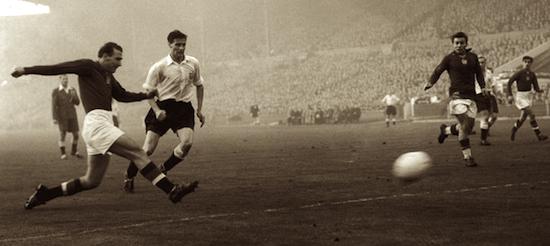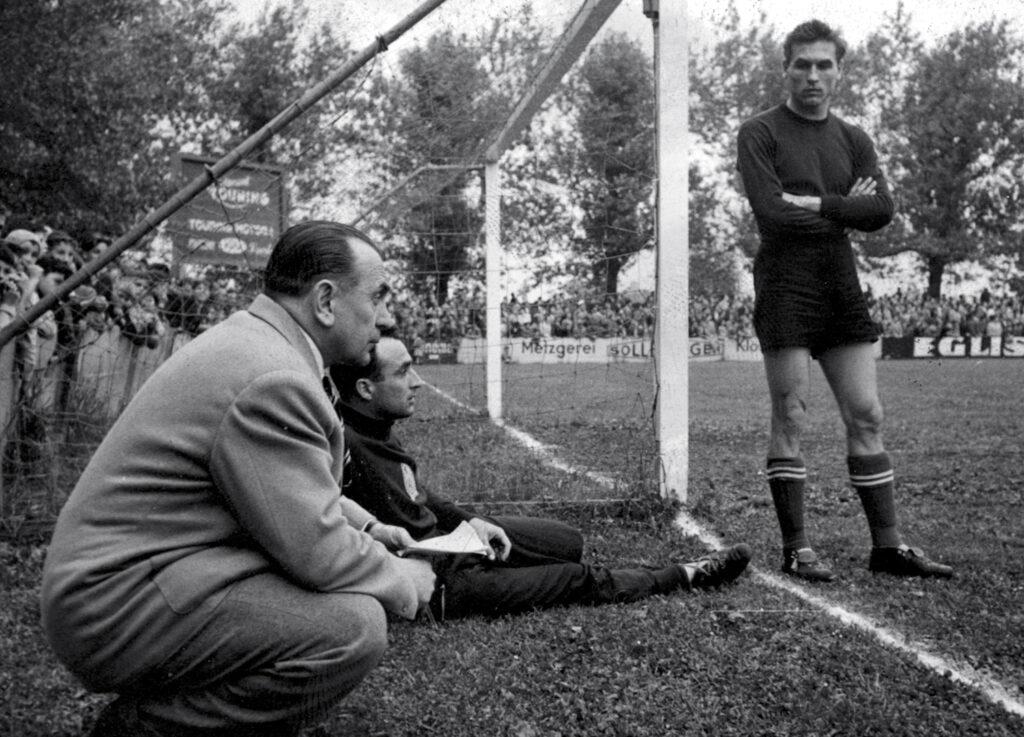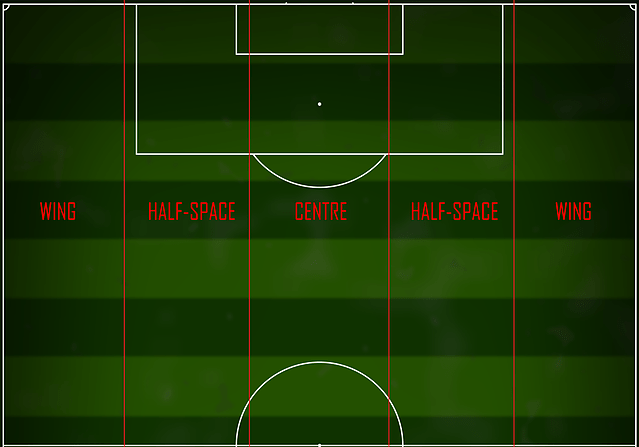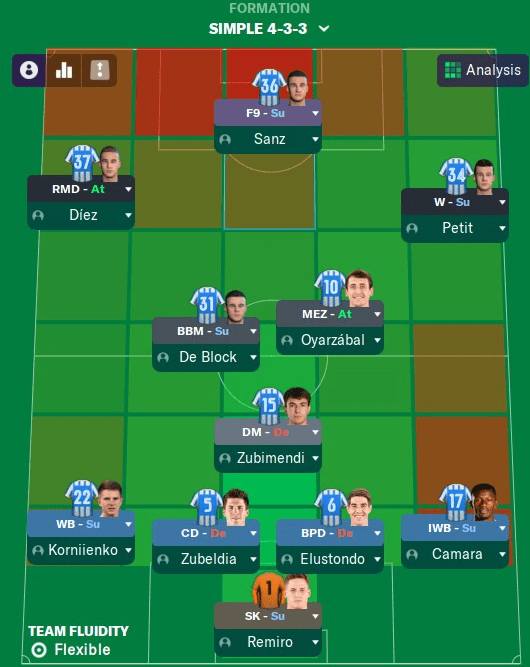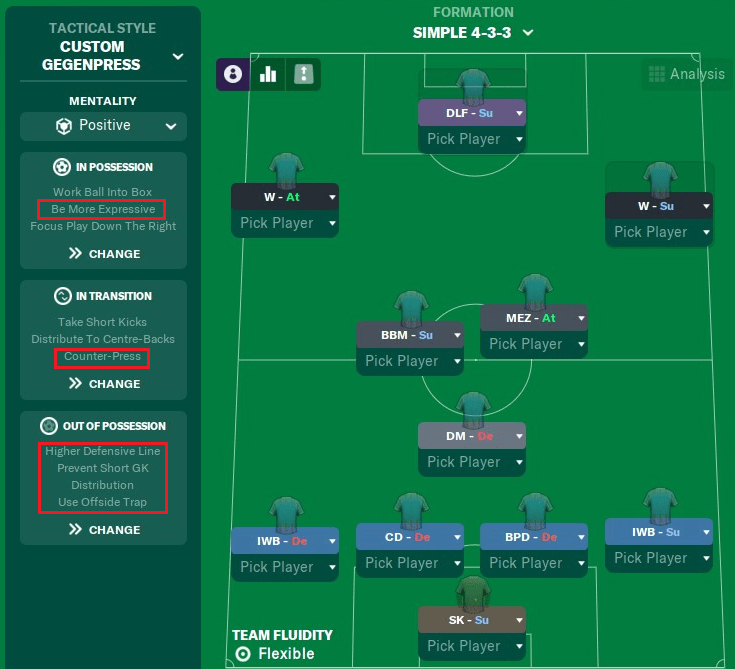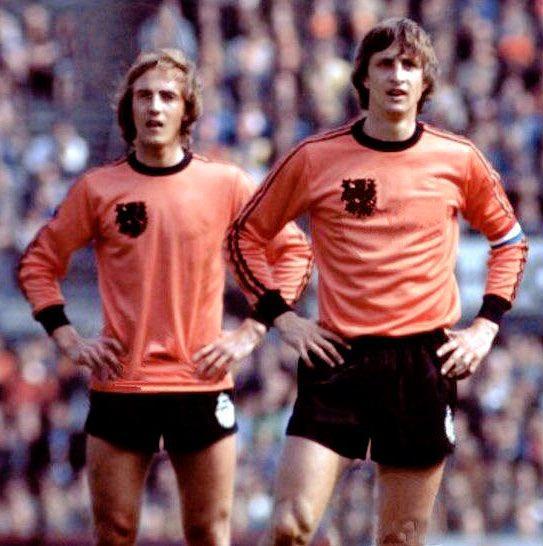
Total Football Journeyman: From Mighty Magyars to Flying Dutchmen
Guide on Half-Space Control in FM21
What is the one historical football style you always wanted to recreate in Football Manager? If you, my dear reader, were to ask me then you probably won’t be surprised by my answer. Especially if you are familiar with my writing over the recent years. Mostly it’s been about recreating Total Football in the simulated world of Football Manager. Ever since FM14, I have attempted this. If my past tactical musings interest you then you can find a handy list of all of them here. In this article (part one of two) I will try to summarize my latest tactical attempts in FM21. I also would like it to serve as a guide for anybody attempting to create beautiful football in the game.
But why Total Football of all football styles? To me the choice is simple. Total Football is the most universal of all playing styles. It contains elements of all other styles, such as defensive, counter-attacking, possession football and even gegenpressing. Provided the team has the right personnel and training, Total Football can be used in any context and against any opposition. It is timeless. It might have officially originated with the Dutch, but its roots can be traced to an even earlier time and another country.
First, Some Historical Background
The influence of Dutch football has been far-reaching. And not only because it became synonymous with Total Football. The Dutch have even defined the footballing culture of another nation with the proud heritage in the sport. The Spanish (or Catalan to be more exact) tradition of possession-focused Tiki-Taka took the ideal of beautiful football to new heights after it was passed to them from Johan Cruyff. And now Cruyff’s disciple, Pep Guardiola, has kept this flame burning as strong as ever. Pep brought success to all the clubs he managed and converted to the Total Football philosophy. But more on that later. First let’s go back in time to 1953. Because before the Flying Dutchmen, Johan Cruyff and Pep Guardiola, there were the Mighty Magyars. The Magical, the Magnificent, the Marvelous Magyars. The Golden Team that started the Total Football revolution.
And it all started with one special match. A game that proved to be both the nadir for one nation and the pinnacle for another.
In what was labelled by the media as match of the century, the team that was number 1 in the world (Hungary) went up against 3rd ranked England. The English had hubris and the proud history of inventing the game on their side. Hungary – the advantage of the latest innovation in football tactics that taking the European continent by storm. Football was no longer a game of 11 individuals on the pitch, but rather a team game. And it was changing from the all-out attacking sport of its early days to one where every phase of play was important, especially possession build-up. In the end, England lost that much 6 to 3. And then they went ahead and lost the 1954 rematch 1954, 7-1. To this date England’s heaviest defeat.
In a nutshell, the Hungarians victory was as much a victory of zonal marking over the older man-marking system. The victory of the new fluid style of defending over the old, rigid one. Yet zonal marking would not become common until the Dutch integrated it into Total Football. It’s rather surprising that the innovative concepts introduced by the Magyars took almost two decades to infiltrate football world at large. But it was proof that there was not really a team capable of playing in such a demanding technical style, until Rinus Michels and his young Ajax of 1960-70s. The team that would introduce Johan Cruyff to the world and create the core for the greatest Dutch National Team ever.
So what did the Dutch learn from the Hungarians? In addition to zonal marking, there were other proto-Total Football concepts at play with Sebes’ 1953 Hungary. Ideas like the use of a centre-forward (Hidegkuti) who dropped so deep that he would effectively operate as a midfielder. This worked in Hungary’s favour as it really confused the English defenders, used to man-marking a traditional spearhead #9 striker and not one roaming into the midfield zone. With the defenders dragged after the False9, the two inside forwards, Puskas and Kocsis, took advantage of the space liberated. This worked much in the same way at Ajax where Johan Cruyff, Michels’ own role-defying #9, opened up room for the two wide forwards Swart and Keizer.
In possession the Dutch 4-3-3 resembled the Hungarian formation. Except where in Sebes’ tactic, the two hard-working wingers provided the width, the Dutch employed their wingbacks for the same task. In the Brazilian way, Dutch wingbacks (or withdrawn wingers really) covered the whole length of the pitch and provided much more support in attack than the traditional fullback of the time. For proactive, high-pressing possession football, the switch from the defensive fullback to the wingback was essential. Simply because dominating the ball in the opposition half is not possible with the fullbacks staying mostly in your own half.
The Magyars saw benefit in hardworking wingers/wingbacks at the time when most sides (1953 England included) used the ultra-attacking WM formation. In a traditional WM, the central striker spearheaded the attack line of 2 inside forwards and 2 wingers. Attack was the only concern for these 5 players. While Hungary also lined up in a WM on paper, in possession they quickly turned into a whole other beast. Once they gained possession, their WM would transform into a super-flexible MM (2-3-3-2) – the forerunner of Dutch 4-3-3. The Hungarian wingers had more similarities with wingbacks then WM’s attacking wingers. Both Czibor and Budai worked very hard in both attack and defence,. They often dropped deep into midfield to provide cover for the more attack-minded inside forwards.
As an early Total Football team, Magyars all moved as one unit. Hungary’s manager Gusztav Sebes encouraged his players to be versatile. That is to play in any position and to cover every inch of the pitch. His ideals were Technique, Hard-work and Teamwork.
When we attacked, everyone attacked, and in defence it was the same. We were the prototype for Total Football.
Ferenc Puskas, forward in 1953 Hungary squad.
Such movement was what really confused the English defenders who did not know who to mark. At one point Hungarian central forward would act like a midfielder and other times their wingers would act more like fullbacks. Rinus Michels took this to the next level with Ajax. Especially the ideas of playing with a False Nine quasi-striker and positional switching. Which both proved essential to Total Football style of play.
I already covered Ajax’ classic 4-3-3 in some detail in my previous series of articles from last year. So you could go back for that to review some of the basics of the 4-3-3 formation.
I also covered Johan Cruyff’s later variation on 4-3-3, the 3-4-3 Diamond. You can read about it here. In the 1990s it became a feared formation, especially against the popular at the time 4-4-2.
This time I will try to focus more on integrating the strengths of both Michel’s 4-3-3 and Cruyff’s 3-4-3, and even some elements of Sebes’ 4-2-4, to create an ultimate Total Football tactic. A sort of “best of compilation” tactic capable of both dominating possession, scoring goals and creating beautiful plays in FM. Quite a lot to ask maybe? But let us see what can be done within the limits of the FM21 match engine.
In FM21, as in reality, you can be successful if you can both attack the half-spaces and maintain possession. Especially if you control the ball in the opponent’s half. I think these are the main reasons behind the success of Pep Guardiola today. Being a natural successor of his Barcelona protégé, Johan Cruyff, Guardiola has been able to integrate a lot of the same Total Football ideas into his own tactics. In all the teams that Guardiola managed from Barcelona to Bayern and finally Man City, he excelled in creating tactics that take advantage of both overloading the opposition half-spaces and in aggressively defending (through possession and high press). But it was not something invented by Pep. Rather this style of play is build on the Total Football legacy that was passed on to Guardiola all the way back from Magical Magyars and later Cruyff’s Diamond.
Overload The Half-Spaces
Before proceeding, I will let the wonderful Tifo do the honours of clearing up what exactly “half-space” means. Especially given how often I will be using this word in the rest of the article. So sit back and enjoy the show.
Half-space control is essential in modern football. Most successfuly managers like Pep Guardiola use some kind of strategy to control/play through the two half-spaces. It’s a strategy that is both essential for creating overloads to draw the opponent out else-where and for crafting better attacking chances once in the final third.
The classic 4-3-3 with its spread of 5 players, winger/cm/striker/cm/winger is probably the easiest shape for controlling the half-spaces. It’s just a matter of setting up the roles, and/or PIs to get your players into the right spaces. Lets start with the two wide central midfielders. In any Total Football formation, 4-3-3 or 3-4-3 Diamond, they are usually the most creative players in the squad.
And they are also the players that will need to regularly get into the half-spaces. Operating there allows them greater mobility and passing options. Simply because a half-space is the gap between the opposition central defence and their fullbacks and thus not fully covered. It is also important to have creative players there because it gives them easier access to your wide attackers. Instead of passing long, players in half-spaces can use more efficient diagonal passes to connect with your attackers. Furthermore shorter diagonal passes have better chance of going to the feet, thus improving ball control in the final third.
When choosing the best half-space operators it’s important to look at two key player instructions (PI). The two are “move into channels” and “roam from position”. Whether your player has them hard-coded into their role or you add them via PIs, it will make him more likely to move into the half-space. Also another consideration is to have varied roles in the half-spaces in order to make your attack more unpredictable. They will also need to outnumber any opponent players, centrebacks or fullbacks, that follow them there. So ideally, you will need four half-space operators in your tactic. Also some players (depending on their role and traits) could do multiple jobs, attacking the space out wide or moving into half-spaces. This depends on the phase of play. A good example is a winger if you play someone with a dominant foot opposite from his flank or with “cut inside” trait.
As you can see I outlined the roles that I expect to operate in the two half-spaces. On the right I used what is probably the best, and easiest to achieve, half-space combo. That is the simple winger/mezzala(attack) combo with a IWS supporting them. While the winger will stretch the opposition on his flank, opening up the half-space for the mezzala to exploit fully. The IWB tends to position himself deeper in the right half-space overloading the opponent there while still supporting the mezzala. The only important PIs on my winger are “get further”, “hold position” and “close down more”. As an alternative, you could use a Roaming Playmaer instead of a mezzala (with “move into channels” PI).
On the left flank things are a little more complicated. There are several ways that half-space control can be achieved here. So I will try to present the more common ones. The two half-space operators here are the W(A) and BBM(with the added PI of “move into channels”). Here I use a more cautious IWB(D). This is because the BBM does not get forward as much as my mezzala. So naturally the IWB can also stay back more. As I do not want him running into the space already occupied by BBM. The key to the flank is my Winger on Attack duty. He tends to be the most attacking player in the whole formation. So naturally you should slot in your most clinical forward here.
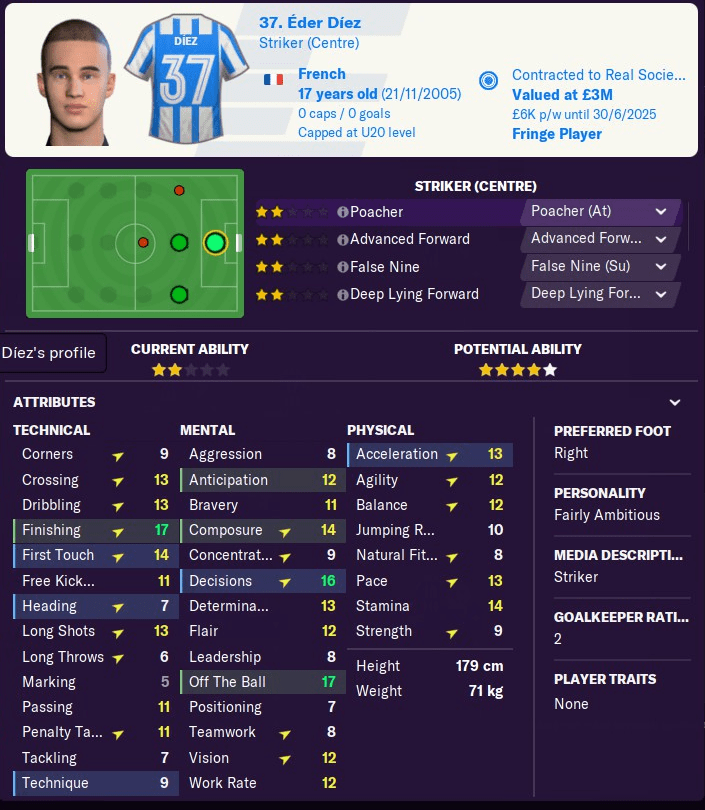
As you might guess, the choice of player here is very important. He must be either comfortable with both feet or have a preferred foot opposite from his flank. This is to make sure that he will only move into a half-space late in the attack. Otherwise a traditional winger playing on the same flank as his dominant foot, will hug the sideline until he can cross. Which is definitely not behaviour I want. You might ask why not simply use an IF or IW with instruction to “stay wider”? Well I tried those and they tend to cut into the half-space too early in the build-up. I really want this player providing width until we have more players forward. Or at least until an overload is created on the right. And most of the opposition moves away from the left half-space to deal with this overload.
There not only one way to control half-spaces. Even when using the same formation like 4-3-3. So depending on your players, you might prefer this alternate version.
Here I chose to use Raumdeuter because of the “move into channels” instruction hard-coded into the role making him an ideal half-space runner. This would be the version to use if you do not have a player with a “move into channel” trait. Also instead of a IWB on the left, it’s better to use a Wingback to compensate for the width you lose with the Raumdeuter.
Tactical System Creation 101
When I talk about creating tactics in FM, I actually prefer to use the term “tactical systems”. Indeed, a successful tactic in the game is not simply about the formation shape, or the collection of roles and team instructions. The pure tactical elements are definitely part of it. But only one of three important pillars in tactic creation. For an effective Total Football tactical system, or any tactic style for that matter, you’ll need three key elements. The Tactical, Player Recruitment (getting the right players for the roles), and the Psychological (player morale). All three can contribute by varying degree to winning or losing a match. Here I can only touch upon the tactical aspect and the leave the other two as a topic for a future article.
So without further ado lets look at the tactical elements like the formation, roles and instructions that go into a successful Total Football system.
Formation Shape
First step in tactic building, as I already mentioned, is the tactical considerations. What formation (shape) will you use? What roles will you fit into that formation to make the whole mechanism really tick? And finally what team instructions, if any, do you absolutely need in order to create your desired playing style.
Formation Shape – Sometimes the choice of shape is obvious even before you begin looking at any other tactical element. Some formation due to their distribution of midfielders and defenders, are more suitable for one style over other. For instance a formation with a lot of midfielders will always be better at possession football than one that is bottom heavy. A bottom heavy formation with a few fast forwards can be a great counter-attacking formation though.
There is a reason why 4-3-3 (or 4-1-2-3 DM) became such a popular possession-control formation. It has an advantage over most other wide formations by utilizing 3 dedicated midfielders. At the same time it has an advantage on the wings with two wide players per side. There are players in each formation strata who are able to move freely between defence, support and attack. So at one time you could defend with 5 players when the wingbacks and DM stay back. Or attack with 2-3-5 shape when in possession in the opposition half. Although I could create a Total Football system with a more unusual shape like 4-4-2, it will require more tweaking to make it work. And since the purpose of this guide is to show the ease of creating simple possession-focused Total Football systems, I’ll go with the obvious choice, 4-3-3.
Player Roles
Roles, roles, roles. Since Football Manager 2014, player roles became front and centre in how we create tactics. Assigning roles became an intuitive and simple way of instructing your players, without tweaking a dozen sliders. But sometimes it’s not so simple or intuitive. Especially when faced with choosing which roles fit your system best or work well together. Here unfortunately there are no simple answers. But it helps to keep a few things in mind. Many roles do similar things and sometimes sticking with the most generic roles is the best choice. Total Football is about the optimal use of space, such as in the wide areas and the half-spaces. And this can be achieved with a variety of roles. So essentially the choice of the roles is not as important as the distribution on these roles in your formation.
A good starting point is looking at your formation and visualizing where you want your attackers/runners, defenders/tacklers and playmakers/supporters. Those are usually the three broadest player archetypes in any football squad. Things get a little complicated when you get special players (Total Footballers if you will) who can fit into more than one category. Yet at the most basic level you’ll need to decide what task the players needs to perform within your tactic. And if he can do several then it’s a bonus as it gives you more depth once inevitable injuries happen. Ideally, any well-balanced squad should have a good mix of all three archetypes.
Because our style is centered around ball possession, the spread of 5 supporters, 3 defenders and 2 attackers/runners is almost a given. As you can see above, I put all the runners is close proximity to at least two supporting roles. In some cases, like IWB on the right, the supporters are there to cover the area liberated by the runners. Also keep in mind that some of these roles are flexible which will change depending on the players available. Some of your players are bound to possess attributes and traits especially suitable to a specific role. So if you have a perfect False9 candidate then I would use him in that role (rather than the DLF). For instance if you have a very good creative dribbler. He would still act as a supporter but would do it far better in role that utilizes his attributes to their fullest.
So that is my very basic 4-3-3. A classic formation inspired by Dutch Total Football style from the 1970s. Of course it is not meant to be a complete recreation of any specific historic team but more as a set-up that I think would fit my current Real Sociedad squad. So things would need to change to accommodate other teams. Also some of the role selections are flexible and might still change after more testing. Especially the left advanced half-space runner which I foresee being pretty flexible depending on the player. I would consider using a Raumdeuter there, but only if you have a very good player perfectly suitable for it.
Team Instructions
Rinus Michels’ Total Football innovation was more tactical than formational. Essentially Michels’ Ajax and Dutch National team played with a pretty basic 4-3-3. The formation itself was an innovation from the 4-2-4, first introduced by an earlier “Total Football” side, 1953 Hungary. But the Dutch 4-3-3 shape was not very innovative. Ajax’ midfield was rather conventional, containing a tackler (Haan), a runner (Neeskens) and passer (Muhren). Then there were the wide attackers and fullbacks who regularly supported team’s attacks. While all of Michels’ players were very comfortable on the ball with top technique, they still mostly stuck to their primary tasks within the formation.
The real difference-maker were the actual players and how they played together. Johan Neeskens was not just simply a runner but a veritable human dynamo, able to cover a ton of space and contribute to both midfield and attack. Then there was Johan Cruyff, the False9, who was simply everywhere. Cruyff’s roaming was one of the reasons for the formation’s fluidity. His ability to dribble at speed dragged opposition defenders out of place and created space for his teammates to run into. Together, the two Johans formed a formidable partnership at the heart of Ajax’ 4-3-3.
It’s actually interesting that it turned out so similar to the game’s Gegenpress Preset. But on second thought it makes a lot of sense. The Dutch Total Football was an early predecessor of modern Gegenpressing tactics in both style and player recruitment.
Its signature fluidity and seamless interchanging of positions defined the Total Football style. But it was the relentless pressing and high offside line that made the Dutch version an improvement from the 1953 Magyars own attempt at Total Football. But there was more. While Magyars introduced the fluid movement and zonal marking to stump their English opposition, the Dutch took Total Football to the next level by focusing on recruitment and training. Ajax’ youth academy was just not able to churn out a few standout players like Cruyff and Neeskens. Like a veritable talent factory, it was able to fill the First Team with exceptional players, year after year. It still does. And all of these youngsters were steeped in the Total Football philosophy from day one. Something that Barcelona was able to emulate very well with its own academy, La Cantera. Indeed, a quarry for Total Footballers.
Defend Through Possession
If you have possession, you don’t need to defend. After all, there is only one ball.
Johan Cruyff
And now a little peak at Part Two article.
Johan Cruyff’s had a peculiar view of defending and it had a massive impact on how modern managers approach this aspect of football. To the point that since Cruyff’s Barcelona no one sees ball possession and defence in isolation. And Cruyff showed just how inexorably linked the two were when he started using his 3-4-3 Diamond formation with Barca in the late 1980s.
Another great formation for Total Football, the 3-4-3 Diamond played very similar to a modern 4-2-3-1. Originally it was used to combat the 4-4-2 that was very popular during Cruyff’s time as a manager. As you saw above, the 4-3-3 can offer greater defensive balance. What I really like about Cruyff’s 3-4-3 (and 4-2-3-1 too) is the central striker and AMC pairing in the middle. By occupying the opposition defence centrally, the two free up the half-spaces even better than a single striker dropping deep would. Also having a diamond in both defence and midfield provides unrivaled ball control. And that will be the topic for the next part of my guide to Total Football tactic creation, titled “Playing on The Edge”. Thank you for reading this far! If you enjoyed this article, then please follow us @ Dictate The Game’s Facebook and Dictate The Game’s Twitter.
Here are some other articles you might like:
